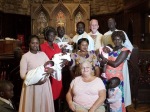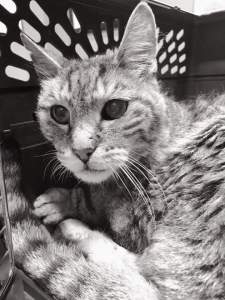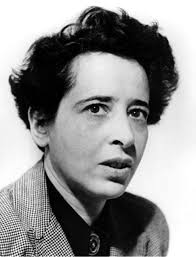Yesterday, at the 10:30 liturgy, we baptized five children, four babies and one toddler. The sacrament of baptism is one of the most powerful liturgies of our church. In the language of the liturgy, we make a powerful declaration of our belief/faith (Credo– “I believe . . . “) in the words of the Apostles’ Creed. Such a declaration of belief of faith is an important public proclamation of our understanding of God and God’s saving message to us. But for me, while the declaration of belief/faith is hugely important, it is the series of questions in the baptismal covenant portion of the liturgy that is most profoundly important to me. In essence, this collection of questions asks us, “If we truly believe this, what will we do to make this real in our lives and in our world?” The questions of the liturgy guide us to consider elements of the Christian life and faith that call us to action or, as I so often say, call us to declare publicly we will live our baptism/faith in the world. Those questions are as follows:
 Will you continue in the apostles’ teaching and
Will you continue in the apostles’ teaching and
fellowship, in the breaking of the bread, and in the
prayers?
Will you persevere in resisting evil, and , whenever
you fall into sin, repent and return to the Lord?
Will you proclaim by word and example the Good
News of God in Christ?
Will you seek and serve Christ in all persons, loving
your neighbor as yourself?
Will you strive for justice and peace among all
people, and respect the dignity of every human
being?
Notice the action words contained in these questions: continue, persevere, resisting, proclaim, seek, serve, loving, strive, and respect. Our baptismal covenant is not a passive proposition! We are not baptized to sit quietly in our private prayer closet and blissfully ignore the challenges of a broken and sinful world. We are not called into isolated solitude, unconcerned about the challenges and attacks visited upon the least or marginalized among us. We are called, in baptism, to be the Body of Living Christ in the world.
Beyond the action words, these questions of the baptismal covenant call us into the moral and ethical community of the apostles. Baptism calls us to be a living community of grace and love in the world, making the sacrament of our faith, bread and prayers, real and available to all. Baptism calls us to reject evil and confess our failings. Baptism challenges us to evangelism, to make the Gospel, real and palpable in the world. Baptism requires we reach out to all people, standing for justice, peace, and dignity for every human being.
To each of these questions, we respond, “I will with God’s help.”
I will–This is the declaration to action we affirm every time we celebrate a baptism. I will . . .
On Sunday, five young children were welcomed into the Body of Christ. As we presented them, I asked the congregation, on behalf of Christians everywhere, “Will you who witness these vows do all in your power to support these children in their life in Christ?”. We replied, “We will.”
On Friday and Saturday, in Charlottesville, VA, our nation and our faith was shattered by unfettered evil, wickedness, and malevolence. The organizers of the “Unite the Right” rally in Charlottesville, the neo-Nazis, the alt-Right, White Nationalists, and other related hate groups, must understand they are completely and totally rejected by the moral and ethical beliefs held by the Body of Christ—the Church. Such rejection must be clear, emphatic, and powerful. In moments like this, the faithful must be unrelenting in their public rejection of such manifestations of hate and evil. The Church has failed this challenge at historic moments in the past. We must not fail in the challenge we face in this present moment.
Five young children baptized on Sunday, with long and full lives before them, should expect us to live the faith we confessed as we presented them for baptism. God heard us when we confessed our belief/faith and responded to each question, “I will.” Each of us affirmed we will “do all in our power to support these children in their life in Christ.”
When my first daughter was born, as I reflected on the broken history into which she was born–of slavery, of the Nazi Holocaust, of the violent rejection by too many of the Civil Rights movement–I committed to never stand passively and allow such evil to progress unchallenged in her world. For each of my daughters, for all the children I have presented for baptism, and for my Lord and my God, I commit to unreserved and active rejection of those who promulgate hate, intolerance, racism, or any form of malignant, vile, and perverted evil.
The Charlottesville event and the rising, unfettered hate-movement reviving in our country is a challenge to the Body of Christ–the Church. Let us with courage, faith, and decisiveness reject the darkness of evil and hate in all its forms. Let us be the light of Christ in the world that overwhelms this present darkness. Let us make our baptismal covenant and our faith real and alive in the world.
Amen.
 Ernie came into our family when our girls were about 17, 15, and 10.
Ernie came into our family when our girls were about 17, 15, and 10.
 So I am reading a fairly dense essay by Hannah Arendt, “Reflections on Little Rock.” While I am no expert on Arendt and the broad reach of her writings, I was not surprised to learn this was a controversial piece and was finally rejected for publication by the journal that requested her thoughts on the integration of public schools in Little Rock. Ultimately, the piece was published in the winter of 1959 edition of Dissent. Arendt was traversing the razor’s edge between social discrimination and political equality; the classic argument between individual freedom and universal equality. Arendt argues the role of government is to ensure social discrimination never curtails political equality. She argues that social discrimination, when allowed legal standing (i.e. discriminatory laws such as miscegenation, restricting voting, etc.), becomes persecution. However, and to the everlasting frustration of some, she also argues “The moment social discrimination is legally abolished, the freedom of society is violated . . .” In the complexity of her discourse, she is arguing that social discrimination limiting political/universal equality cannot be affirmed by the legal systems of the state, but the legal systems of the state cannot impede social discrimination as an exercise of individual freedom, no matter its disagreeable nature. In the social setting, she sees discrimination as an unavoidable human reality; still, it should neither be affirmed or restricted by public law. Government or, more specifically, the deliberative structures that organize the laws of the land “. . . can legitimately take no steps against social discrimination because government can act only in the name of equality . . .”.
So I am reading a fairly dense essay by Hannah Arendt, “Reflections on Little Rock.” While I am no expert on Arendt and the broad reach of her writings, I was not surprised to learn this was a controversial piece and was finally rejected for publication by the journal that requested her thoughts on the integration of public schools in Little Rock. Ultimately, the piece was published in the winter of 1959 edition of Dissent. Arendt was traversing the razor’s edge between social discrimination and political equality; the classic argument between individual freedom and universal equality. Arendt argues the role of government is to ensure social discrimination never curtails political equality. She argues that social discrimination, when allowed legal standing (i.e. discriminatory laws such as miscegenation, restricting voting, etc.), becomes persecution. However, and to the everlasting frustration of some, she also argues “The moment social discrimination is legally abolished, the freedom of society is violated . . .” In the complexity of her discourse, she is arguing that social discrimination limiting political/universal equality cannot be affirmed by the legal systems of the state, but the legal systems of the state cannot impede social discrimination as an exercise of individual freedom, no matter its disagreeable nature. In the social setting, she sees discrimination as an unavoidable human reality; still, it should neither be affirmed or restricted by public law. Government or, more specifically, the deliberative structures that organize the laws of the land “. . . can legitimately take no steps against social discrimination because government can act only in the name of equality . . .”. 
